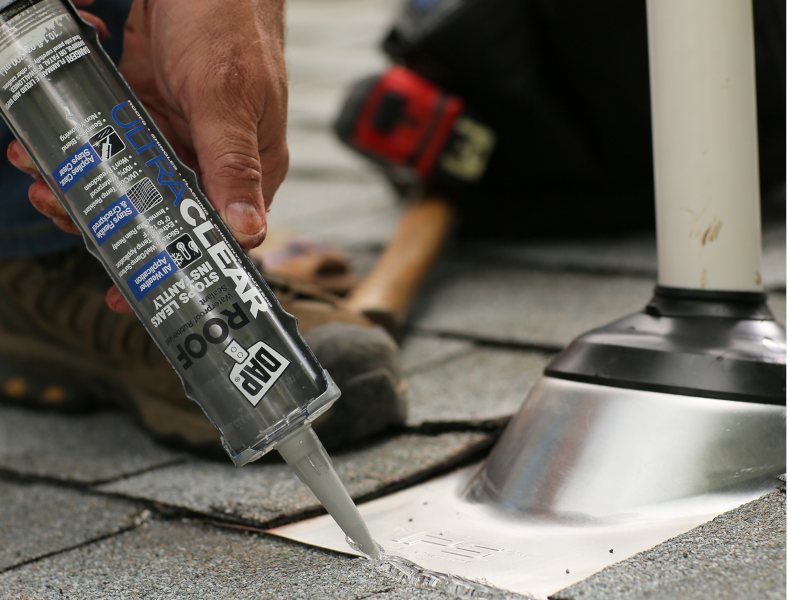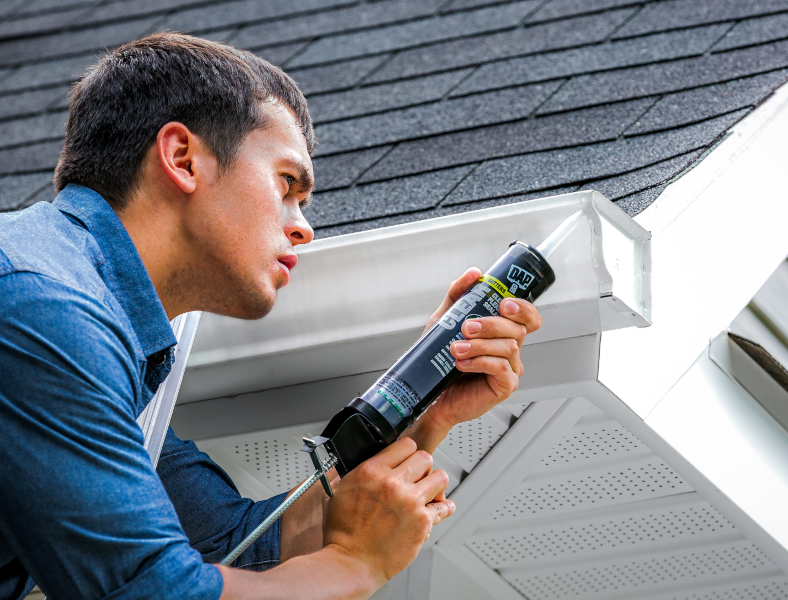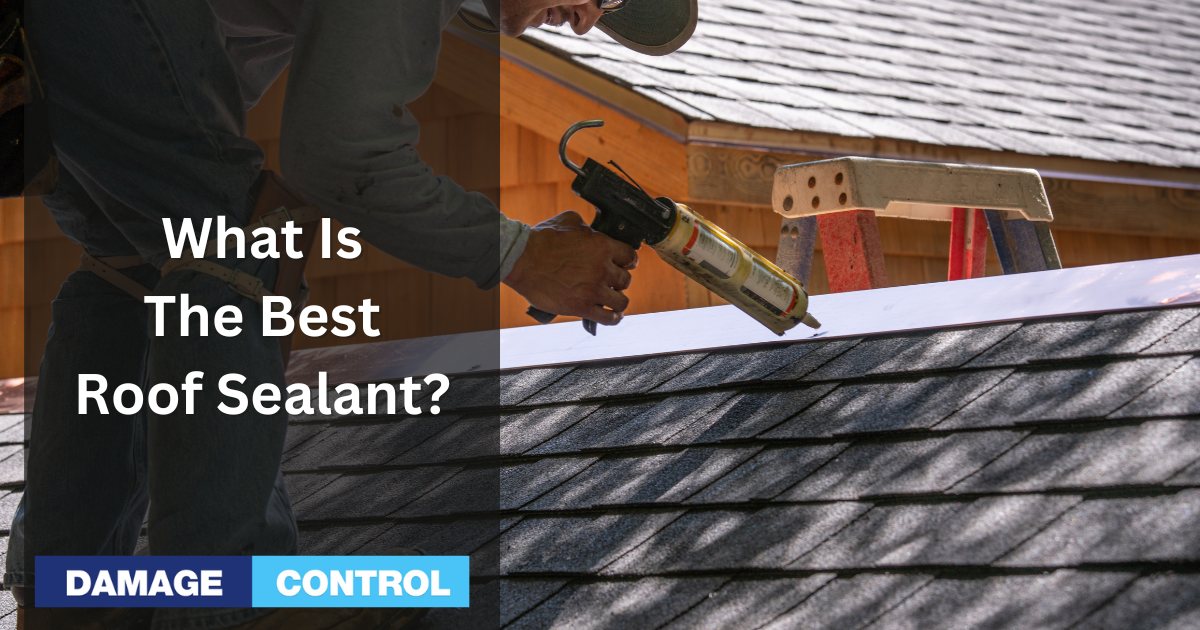Ah, roofs! The unsung heroes of our homes. Let's talk about something that'll keep them happy and healthy – roof sealants! You know, that magical goo that helps preserve your roof's integrity? It's time to dive into the wonderful world of roof maintenance and explore the role of sealants in keeping our roofs in tip-top shape. Ready to learn some roof-saving secrets? Let's go!II. What is Roof Sealant?
Choosing the Right Roof Sealant

So, you're sold on the idea of using a roof sealant. But wait, there's more! Now we've gotta figure out which one is perfect for your roof. Like a good pair of shoes, the right sealant depends on a few factors. Let's explore them, shall we?
Material of your roof
First things first, what's your roof made of? Shingles, tiles, metal, or maybe something else? Each material has its own unique needs, and the right sealant will cater to those needs like a dedicated butler.
Climate and weather conditions
Next up, let's talk about the weather. Is your roof constantly battling rain, snow, hail, or the scorching sun? Depending on your local climate, you'll need a sealant that can withstand Mother Nature's mood swings.
Ease of application
Let's face it – we all love a little convenience. Some sealants are easier to apply than others, so consider whether you're a DIY champ or if you'd prefer to call in the pros.
Budget
Last but not least, let's talk money. Different sealants come with different price tags. It's important to balance quality with affordability to make sure you're getting the best bang for your buck.
Top roof sealant brands and products
Alright, now that we've covered the basics, let's talk about some of the top players in the roof sealant game. Some popular brands include GacoRoof, Henry, and Rust-Oleum. Each of these brands (and many others) offers a variety of products, so be sure to explore their offerings and find the one that checks all your boxes.
Types of Roof Sealants
Let's take a little detour and explore the fascinating world of roof sealants. Think of them like ice cream flavors – there's a whole bunch to choose from! And, like ice cream, some types will suit your taste (or in this case, your roof) better than others. Let's dig in!
Acrylic Sealants
Acrylic sealants are like the vanilla of roof coatings. They're water-based, easy to apply, and work well with most roof materials. They're known for their UV resistance and ability to expand and contract with temperature changes. A popular choice for many homeowners!
Silicone Sealants
Silicone sealants are the chocolate chip cookie dough of the roof sealant world – a little more special than vanilla, but still pretty popular. They're super durable, highly resistant to weather, and can handle standing water like a champ. A great pick if you live in a rainy area!
Urethane Sealants
Urethane sealants are the rocky road of roof coatings – they've got a little bit of everything. They offer excellent adhesion, strong weather resistance, and are less prone to dirt pickup. If you're looking for a sealant that's a step above the rest, urethane might be your choice.
Rubberized Sealants
Rubberized sealants are like the mint chocolate chip of the roof sealant world – they're not for everyone, but they've got their loyal fans. These sealants are highly elastic and can be applied to a variety of roof materials. They're also great at sealing small cracks and preventing leaks.
Now that we've covered some of the top types of roof sealants, let's circle back to the popular brands we mentioned earlier – GacoRoof, Henry, and Rust-Oleum. Each of these brands (and many others) offers a variety of sealant types, so be sure to explore their offerings and find the one that checks all your boxes.
Preparing Your Roof for Sealant Application
Before we get our hands dirty with sealant, we've got some prep work to do. You wouldn't paint a dirty canvas, right? Same goes for your roof. Let's roll up our sleeves and get ready for some rooftop TLC!
Inspection and assessment
First up, channel your inner Sherlock Holmes and inspect that roof. You'll want to:
Identifying problem areas
Keep an eye out for any spots that look like they're causing trouble. Think loose shingles, cracked tiles, or anything that's just a bit off.
Checking for leaks, cracks, and damage
Leaks and cracks are sneaky little things. Make sure to check for any signs of water damage inside and outside your home.
Cleaning the roof surface
Now that we know what we're working with, it's time for some roof hygiene. Get ready to:
Removing debris and moss
Grab a broom or a leaf blower and clear away any debris, leaves, or moss that's been hanging out on your roof.
Pressure washing
For a squeaky-clean surface, consider pressure washing. This will help remove stubborn dirt, grime, and algae. Just be gentle – we don't want to damage your roof! Always use the soft wash nozzle. Never use high pressure.
Repairing any damage
Alright, now that we've got a clean slate, it's time to fix up any issues we found during our inspection.
Replacing damaged shingles or tiles
If any shingles or tiles have seen better days, now's the time to swap them out for shiny new ones.
There you have it! Your roof is now primed and ready for a fresh coat of sealant. Onward!
Applying Roof Sealant: Step-by-Step Guide

Alright, friends, it's time to roll up our sleeves and get down to business. Applying roof sealant can be a fun DIY project if you're up for the challenge. Here's a step-by-step guide to help you become a sealant superstar!
Gathering necessary tools and materials
Before we dive in, let's make sure we've got everything we need. Grab your chosen sealant, a brush, roller, or sprayer (we'll talk more about these in a sec), a stirring stick, and any protective gear you might need (gloves, goggles, etc.). Ready? Let's do this!
Safety precautions
Safety first, folks! Make sure to take all necessary precautions. Use a sturdy ladder to access your roof, and consider using a safety harness. Don't forget to wear non-slip shoes and work in dry conditions. Oh, and always follow the manufacturer's instructions for your sealant!
Application techniques
Now that we're all geared up, let's talk technique. There are a few ways to apply your sealant, so choose the one that works best for you:
Brush, roller, caulk gun, trowel, or sprayer
You can use a brush, roller, caulk gun, trowel, or sprayer to apply your sealant, depending on the sealant type. Brushes are great for detail work, rollers work well for larger areas, and sprayers make quick work of the whole job. Pick your weapon!
If you're using roofing cement, you'll need a trowel
Proper coverage and thickness
Make sure to apply your sealant evenly and at the recommended thickness. Too thin won't do its job; too thick, and it might crack or peel. Like Goldilocks, we want it just right.
Drying and curing time
Finally, it's time to let your masterpiece dry and cure. Check the manufacturer's instructions for specific drying and curing times. Be patient, my friend – your roof is about to be transformed!
There you have it! You're now a bona fide roof sealant pro. Pat yourself on the back and admire your handiwork. Your roof is now ready to face the elements with renewed strength and vigor!
Maintaining Your Sealed Roof
Great job! Your roof is now sealed and ready to take on the world. But wait, there's more! Just like a well-tended garden, your sealed roof needs some love and care to stay in peak condition. Let's talk about how to keep your roof looking and feeling its best.
Regular inspection and cleaning
First things first: let's keep an eye on our rooftop buddy. Regular inspections will help you spot any potential issues before they become big problems. And don't forget to give your roof a good cleaning now and then – it loves to be pampered!
Reapplying sealant when necessary
Over time, your sealant might need a touch-up. Check the manufacturer's instructions for guidance on when to reapply. Remember, a little maintenance goes a long way in keeping your roof happy and healthy!
Preventing damage from harsh weather conditions
Finally, let's talk about weatherproofing. Your sealed roof is already better equipped to handle Mother Nature's mood swings, but a few extra precautions can help keep it in tip-top shape. Trim any overhanging branches, clear gutters and downspouts, and keep an eye on the weather forecast.
And there you have it! With a little love and attention, your sealed roof will serve you well for years to come. So go on, give your roof a little TLC – it deserves it!
Common Roof Sealant Mistakes to Avoid
Hey, nobody's perfect. We all make mistakes. But when it comes to sealing our roofs, it's better to learn from others' slip-ups than make our own. So let's talk about some common roof sealant blunders and how to steer clear of them.
Poor surface preparation
You wouldn't put makeup on a dirty face, would you? The same goes for your roof. Make sure it's clean, dry, and damage-free before you start slathering on that sealant. Trust us, your roof will thank you!
Applying sealant in adverse weather conditions
Sure, we can't control the weather, but we can choose when to apply our roof sealant. Avoid working in rain, high winds, or extreme temperatures. Your sealant will appreciate the calm, stable environment, and you'll appreciate the better results!
Inadequate coverage or thickness
There's a fine line between too little and too much sealant. Like a delicious layer cake, we want our sealant to be just right. Follow the manufacturer's guidelines to make sure you're applying the right amount of sealant to keep your roof safe and sound.
Ignoring manufacturer's instructions
Last but not least, don't forget to read the instructions! Those wise folks who made your sealant know their stuff, so pay attention to their advice. Whether it's drying times, application techniques, or safety precautions, they've got your back.
Frequently Asked Questions
Got questions? We've got answers! Here are some common queries about roof sealants and their oh-so-enlightening responses.
How often should I apply roof sealant?
The application frequency depends on the sealant type and your roof's specific needs. As a general rule, check the manufacturer's instructions and be prepared to reapply every few years.
Can I apply roof sealant on a wet surface?
Nope, nope, nope! Applying sealant on a wet surface is like trying to ice skate on a swimming pool. Make sure your roof is clean and dry before getting started.
How long does roof sealant last?
The lifespan of roof sealant varies, but most products last between 5 and 10 years. Check the manufacturer's guidelines for a more accurate estimate.
Is roof sealant safe for all roof materials?
Not all sealants play nice with every roof material. Be sure to choose a sealant that's compatible with your roof's specific needs.
Can I apply roof sealant myself, or should I hire a professional?
If you're a confident DIY-er, applying roof sealant can be a fun and rewarding project. Just make sure you follow the manufacturer's instructions and prioritize safety. If you're unsure, there's no shame in calling in the pros!
Conclusion
And there you have it – the ultimate guide to roof sealant! We've explored the importance of roof sealants in preserving and extending the life of your roof. With this knowledge, you're now equipped to make informed decisions about choosing and applying the perfect sealant for your rooftop fortress.
But wait, don't go just yet! We've got more goodies for you. If you're hungry for even more roofing wisdom, we've got a smorgasbord of articles to satisfy your appetite. Want to learn about the what are the benefits of a mansard roof? No problem! Interested in what roof types are best for rolled roofing? Look no further.
So don't be a stranger – keep exploring our treasure trove of roofing resources.

